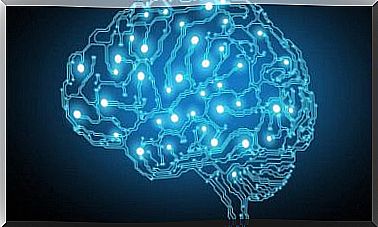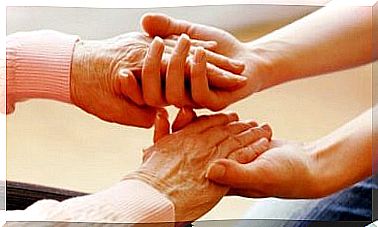New Perspectives In The Treatment Of Generalized Anxiety Disorder (GAD)

Patients with generalized anxiety disorder experienced a higher frequency of past interpersonal traumatic events. They show a more precarious attachment to their loved ones during their childhood (compared to the population who did not receive this diagnosis). Therefore, new perspectives highlight the importance of addressing interpersonal issues in these patients.
All of these questions do not appear to be well addressed in current cognitive behavioral therapies. Such traumas can be deeper emotional issues that patients with GAD would avoid by worrying.
Other new directions have been developed to overcome these limitations from the cognitive-behavioral perspective in the management of generalized anxiety disorder. In the rest of this article, we’ll talk about Newman’s integrative therapy. But also of Mennin’s regulating emotion therapy. And finally Roemer and Orsillo therapy based on acceptance as the basis of treatment for GAD.
Newman’s integrative therapy
Patients with GAD don’t just worry, they behave with an increased likelihood of negative interpersonal consequences. Thus, they prevent others from knowing what they are and what they are feeling. In order to avoid the criticisms and the rejection they anticipate. They may also not communicate their needs and wants, expressing their anger and disappointment when their emotional needs are not met.
Newman et al. (2004) developed integrative therapy for the treatment of GAD. It is applied sequentially, through a traditional two-hour CBT session. As well as through interpersonal techniques. All this in order to intervene on the patient’s problems.
The objectives of the interpersonal / experiential part are:
- Identify the interpersonal needs of the patient. Also the interpersonal forms with which he tries to satisfy his needs and the underlying emotional experience.
- Generate more effective interpersonal behaviors to meet their own needs.
To achieve these goals, experiential therapy techniques are used, with an emphasis on the emotional avoidance approach. On the other hand, it may only be useful for patients who present with certain types of interpersonal problems.

Mennin’s Emotion Regulatory Therapy
Mennin (2004) proposed an emotion regulating therapy based on the idea that people with GAD more easily experience negative emotions. In addition, they have difficulty identifying and understanding their emotions. To value them negatively without accepting them. And to regulate them.
Emotional regulation therapy integrates components of CBT with emotion-focused interventions that address deficits in emotional regulation. In addition, the social problems of patients are also discussed.
Emotional regulation therapy has four phases:
- Psychoeducation on GAD, functional analysis of concerns and emotions and self-registration of concerns.
- The patient then learns to identify defense and avoidance responses to emotions, such as worry and seeking comfort. Instead, he learns skills of somatic awareness or identification of beliefs about central problematic issues. The work is therefore focused on emotional understanding and acceptance, as well as on identifying and expressing one’s own needs and emotions.
- The skills learned are used in a variety of experiential exercises related to central issues, such as fear of losing, incompetence and failure. These experiential exercises can include techniques such as the empty chair. The dialogue of the two chairs and the imaginary exhibition. But also the downward arrow and the Socratic dialogue.
- Review of progress, end of therapeutic relationship, prevention of relapses and future goals beyond therapy.
Emotional regulation therapy was superior to an attention control condition in a wide variety of measures (worry, anxiety, depression), with the effect size ranging from moderate to severe.
Roemer and Orsillo’s behavioral therapy based on acceptance
According to the Roemer and Orsillo model, people with generalized anxiety disorder have a problematic relationship with their internal experiences. In this component, two aspects can be distinguished. The negative reaction to internal experiences and the fusion or overidentification with them.
- Negative reactions include negative thoughts and metaemotions (eg, fear of negative emotions), which make it difficult to observe and accept internal experiences.
- Merging with internal experiences involves seeing them as much more indicative of the reality of what they are. Patients with GAD consider transient negative thinking to be a defining characteristic of the person. This problematic relationship with internal experiences gives rise to experiential avoidance.
Experiential avoidance is the deliberate or automatic avoidance of internal experiences that are perceived to be threatening (eg, worrying about avoiding more disturbing experiences). This avoidance would reduce the discomfort, but only temporarily, and help maintain the problematic relationship with internal experiences.
In addition, it would facilitate the emergence of a behavioral restriction ; the person is less engaged in useful or meaningful activities or is less aware of them when performing them. This behavioral constraint increases the discomfort, generating more negative internal experiences and perpetuating the cycle. With this in mind, Roemer and Orsillo (2007, 2009) proposed Acceptance Based Behavior Therapy (ABTB).

Components of Acceptance-Based Behavior Therapy
- Using mindfulness and acceptance of own experiences, with behavioral principles of learning and practicing new skills.
- Explanation and demonstration of a TAG model in which the role of experiential avoidance is emphasized. This model must be linked to the treatment to be followed.
- Using a variety of mindfulness techniques with the patient, focusing first on breathing, paying attention to sensations, then emotions and thoughts.
- In addition, therapists help the patient to:
- Break the fusion between self-perception and inner experiences.
- Identify the activities that they value in their life (interpersonal relationships, work / study and personal interests).
- Live the life they want, focusing on actions. Despite the painful thoughts and feelings that may arise.
ABTT as a treatment for generalized anxiety disorder would result in changes in key variables highlighted by other theoretical models. Difficulties regulating emotions, fear of emotional reactions, intolerance of uncertainty and poor perceived control.










